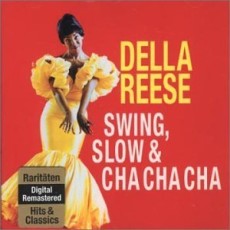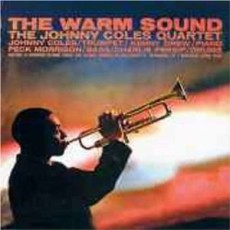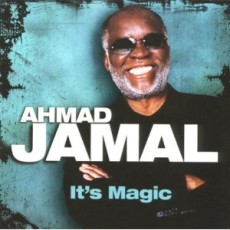
Daily Dose Of Jazz…
Della Reese was born Delloreese Patricia Early on July 6, 1931 in Detroit, Michigan to an African-American steelworker and Cherokee cook. At age 6 she began singing in church becoming an avid Gospel singer. Her mother would take her to the movies on weekends to see the portrayals of glamorous life by Joan Crawford, Bette Davis and Lena Horne, whereupon afterwards she would act out scenes from each movie. By 1944 she was directing the young people’s choir, nurturing her acting and her obvious musical talent.
She was often chosen on radio, as a regular singer and by age thirteen she was hired to sing with Mahalia Jackson’s Gospel group. Upon entering Cass Technical High School in Detroit, attending with Edna Rae Gillooly, later known as movie star Ellen Burstyn, Reese was a brilliant, no-nonsense student. She continued touring with Mahalia and with higher grades she was the first in her family to graduate from high school in 1947, at only 15.
After graduation Della formed her own gospel group called the Meditation Singers but her mother’s death and father’s illness interrupted her singing and education at Wayne State University. Taking odd jobs as a truck driver, dental receptionist and even elevator operator she continued to perform in clubs but realizing her name was too long for the marquee, shortened it to Della Reese.
Della’s career has spanned more than half a century and during that time she has taken her gospel roots and added jazz, pop and R&B. Her string of singles topped or landed in the top 10 of all the music charts at one time or another. She was voted Most Promising Singer in 1957 by Billboard, Cashbox and other magazines, following with her biggest hit at the time “Don’t You Know?” that would become her early career signature song.
She has received four Grammy nominations, recorded numerous albums, played Vegas for nine years, toured worldwide, ventured into acting on stage, film and television successfully with “Touched By An Angel”, has been a game show panelist, talk show host, spokeswoman for the American Diabetes Association, has a star on the Hollywood Walk of Fame and is an ordained minister.
More Posts: vocal

Daily Dose Of Jazz…
Ray Biondi was born Remo Biondi on July5, 1905 in Cicero, Illinois. As a child, he started with violin and down a road that was not supposed to lead to ditties with suggestive titles. His early training was classical at the American Conservatory of Chicago. Mandolin was a natural double at age 12 and a gateway into the world of string bands. He remained focused mostly on violin but added guitar and then trumpet into his musical arsenal as he began thinking outside the classical idiom.
In 1926 Ray began playing professionally with the Blanche Jaros Orchestra, and the following year started an eight-year period of heavy freelancing in Chicago, enjoying sets with trumpeter Wingy Manone and reedman Bud Freeman and many others. He joined Earl Burtnett’s band as a violin and trumpet double, ending up on the road gigging in Kansas City, Cincinnati, New York and distant destinations.
He played violin and trumpet with clarinetist Joe Marsala, often adding guitar when Eddie Condon double-booked himself. This relationship continued until 1938, when Gene Krupa hired Biondi to work solely as a guitarist. He left Krupa a year later and went on his own in a series of small groupings. He opened a short-lived club, rejoined Krupa on the road in the early ‘50s and became a guitar and mandolin session player outside straight jazz.
By 1961 Ray began made a serious shift to teaching all of his instruments except the trumpet, while continuing to perform with groups both large and small, including the Dick Schory orchestra and stride pianist Art Hodes in the latter. Multi-string instrumentalist Ray Biondi passed away on January 28, 1981 in Chicago, Illinois.

Daily Dose Of Jazz…
Fred Wesley was born July 4, 1943 in Columbus, Georgia and raised in Mobile, Alabama. The son of a high school teacher and big band leader as a child he took piano and later trumpet lessons. At around the age of twelve his father brought a trombone home, whereupon he switched.
During the 1960s and 1970s Wesley went to R&B as many jazz musicians did to earn a living and became a pivotal member of James Brown’s bands, playing on many hit recordings including “Say It Loud – I’m Black and I’m Proud”, “Mother Popcorn” and co-writing tunes such as “Hot Pants”. His slippery riffs and pungent, precise solos, complementing those of saxophonist Maceo Parker, gave Brown’s R&B, soul, and funk tunes their instrumental punch.
In the 1970s he also served as bandleader and musical director of Brown’s band The J.B.’s and did much of the composing and arranging for the group. His name was credited on ‘Fred Wesley & the J.B.’s’ recording of “Doing It To Death” which sold over one million copies, and was awarded a gold record 1973. Leaving Brown’s band in 1975, Wesley spent several years playing with George Clinton’s Parliament-Funkadelic projects, even recording a couple of albums as the leader of a spin-off group, The Horny Horns.
Wesley became a force in jazz in 1978 when he joined the Count Basie Orchestra. He released his first jazz album as a leader, “To Someone” in 1988, followed by “New Friends”, Comme Ci Comme Ca, and the live album “Swing and Be Funky” and “Amalgamation”.
In the early nineties Fred toured with former JB colleagues Pee Wee Ellis and Maceo Parker, as the JB Horns. When Ellis left, the band became The Maceo Parker Band with Wesley as the featured trombonist until 1996 when he formed his own band, The Fred Wesley Group, now known as Fred Wesley and the New JBs.
Wesley’s 35-year career includes playing with and arranging for a wide variety of other artist such as Ray Charles, Lionel Hampton, Randy Crawford, Vanessa Williams, The SOS Band, Cameo, Van Morrison, Socalled and rappers De La Soul, to name a few, while many other artists have sampled his work.
He has written an autobiography “Hit Me, Fred: Recollections of a Sideman”. Wesley served as an adjunct professor in the Jazz Studies department of the School of Music at the University of North Carolina at Greensboro from 2004 to 2006, and now works with students as a visiting artist at numerous other schools including Berklee College of Music and Columbia College of Chicago.
More Posts: trombone

Daily Dose Of Jazz…
Trumpeter Johnny Coles was born on July 3, 1926 in Trenton, New Jersey. He spent his early career playing with R&B groups, including those of Eddie Vinson, Bull Moose Jackson, and Earl Bostic from 1948-1956). He joined James Moody for two years in 1956, then played with Gil Evans’s orchestra between 1958 and 1964 and was a part of the Miles Davis ensemble on Sketches of Spain.
Following this period, Coles worked with the Charles Mingus sextet which also included Eric Dolphy, Clifford Jordan, Jaki Byard, and Dannie Richmond. From 1968 to 1986 he played with Herbie Hancock, Ray Charles, Duke Ellington, Art Blakey, Dameronia, Mingus Dynasty and the Count Basie Orchestra under Thad Jones’ direction.
Coles recorded as a leader several times over the course of his career for Epic, Blue Note, Mainstream and Criss Cross record labels. As a sideman he recorded sessions with Tina Brooks, Booker Ervin, Grant Green, Horace Parlan and Duke Pearson among others.
Nicknamed “Little Johnny C”, the trumpeter passed away of cancer on December 21, 1997 in Philadelphia, Pennsylvania.
More Posts: trumpet

Daily Dose Of Jazz…
Ahmad Jamal was born Freddy “Fritz” Jones on July 2, 1930, in Pittsburgh, Pennsylvania. A child prodigy, he began playing the piano at the age of three and started formal studies at 7. While attending Westinghouse High School, he completed the equivalent of college master classes under the noted African-American concert singer and teacher Mary Caldwell Dawson and pianist James Miller. Joining the musicians union at 14, he began touring with first the George Hudson Orchestra upon graduation at the age of 17. He followed that employ with The Four Strings, that drew critical acclaim for his solos.
Jamal moved to Chicago in 1950, formed his first trio, The Three Strings and was discovered and signed by record producer John Hammond while performing at New York’s The Embers Club. At Okeh Records the trio cut their first sides in 1951. Working as the house trio at the Pershing Hotel in Chicago they recorded and released the landmark classic album “But Not For Me” which stayed on the Ten Best selling charts for 108 weeks. The financial success from this one album allowed Jamal to open a restaurant and club call The Alhambra.
Miles Davis, Randy Weston, Keith Jarrett, Jack DeJohnette and Gary Peacock cite him as a major influence in use of rhythm and space as well as his innovative use of multi-tonal melodic lines and his unique extended vamps. Over the course of his career Ahmad Jamal’s style has changed steadily from the lighter, breezy style heard on his 1950s recordings to the Caribbean styling of the 1970s and onto the large open voicing and bravura-laden playing of the Nineties.
He performed the title tune by Johnny Mandel for the soundtrack of the film “Mash”, has received the American Jazz Masters award from the National Endowment for the Arts; named a Duke Ellington Fellow at Yale University; and two tracks from his hit album But Not For Me – “Music, Music, Music,” and “Poinciana” were featured in Clint Eastwood’s film The Bridges of Madison County. The French government has inducted Ahmad Jamal into the prestigious Order of the Arts and Letters, naming him “Officer de l’Ordre des Arts et des Lettres.
Pianist Ahmad Jamal continues to tour with his trio, playing the world’s most prestigious venues and festivals exclusively on Steinway pianos.
More Posts: piano

